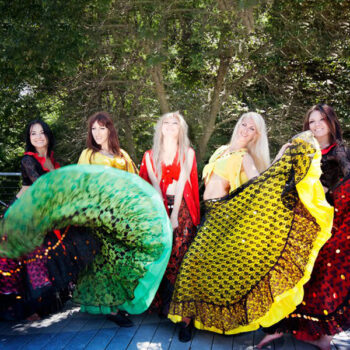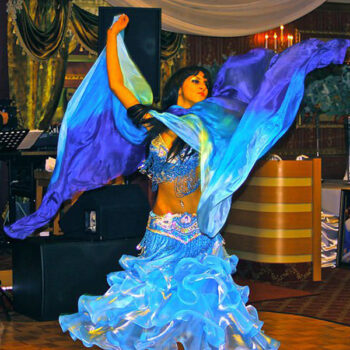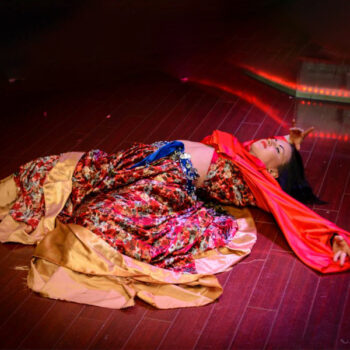Flamenco dancing is a mesmerizing art form that originated in Spain and is distinguished by its ferocious and passionate motions. This incredibly emotive dance form has won over audiences all over the world with its deft footwork, intense emotion, and rhythmic guitar accompaniment. Flamenco dancing continues to amaze and inspire people of all ages due to its lengthy history and wide variety of forms.
Who created the flamenco dance?
Flamenco repertoire has a mysterious history dating back many years, adding to its mystique. It is thought to have originated in the Andalusian region of southern Spain, where it was influenced by a fusion of Romani, Moorish, and Jewish traditions. As a means of expression and communication, flamenco styles developed naturally throughout these communities. Although it is challenging to pinpoint a single person as the originator of flamenco, it is undeniably a collective art form that has developed over time.
History flamenco dance
The cultural legacy of Spain is firmly ingrained in the history of flamenco dancing. It was created in the 18th century, and since then, it has experienced numerous changes. It was initially performed in private settings like family reunions and informal parties in Andalusia communities. Flamenco dancing expanded its reach into theaters and public performances as it acquired popularity and reputation throughout time.
What nationality is flamenco?
Flamenco is frequently regarded as the essence of Spanish culture. Despite having its roots in Spain, it has influenced cultures outside of the nation. The Romani people, sometimes called Gypsies, had a big influence on how flamenco evolved. The Romani people brought with them a rich musical and dance legacy when they migrated from North India to Europe, and this tradition got entwined with the regional cultures of Spain.
Flamenco dance origin
Flamenco dancing has its roots in the distinctive fusion of cultures in Andalusia, Spain. Romani immigrants brought their own dance and musical traditions to the area, where they mingled with the already-existing Andalusian musical instruments and dance traditions. Flamenco, which is marked by its ferocious dancing, dexterous hand gestures, and soul-stirring Spanish music styles, was born from this mix.
Flamenco dances examples
Flamenco includes a variety of dance forms, each with its distinctive qualities and atmosphere. Examples that stand out include:
- Solea: One of the oldest and most essential flamenco forms, Solea is distinguished by its strong and mournful expressiveness. It emphasizes strong feelings and dramatic movements, frequently accompanied by wistful singing and guitar strumming.
- Alegrias: This upbeat and jovial flamenco style captures the vivacious spirit of Andalusia. It has joyful motions, rapid footwork, and a festive mood.
- Bulerias: Bulerias is a quick-moving, improvised form of flamenco dancing. Intricate footwork, rhythmic hand clapping, and animated exchanges between the flamenco dancers and musicians define it.
Are there different styles of flamenco?
Yes, there are many different types of flamenco dance styles that fall under the umbrella of flamenco, each with unique qualities and regional variations. These many fashions have changed over time to represent the distinct cultural influences and regional customs of Spain's various regions. Several flamenco dance styles names include:
What are the three forms of flamenco?
- Cante (Flamenco songs): The Cante is a fundamental flamenco element that embodies the art form's vocal component. It is distinguished by intensely emotive singing that is frequently accompanied by rhythmic clapping and guitar strumming.
- Baile (dance): The physical manifestation of flamenco through dance is referred to as baile. It includes a variety of fluid motions, from delicate arm gestures to deft footwork, all executed with accuracy and fervor.
- Toque (guitar playing): Toque is the flamenco guitar music that serves as the dance and singing's melodic and rhythmic underpinning. A complex tapestry of sound is woven by accomplished guitarists, adding to and enhancing the performance as a whole.
Popular flamenco dance styles
Diverse and enthralling flamenco dancing forms are available. The flamenco dance styles list:
- Sevillanas: This form of flamenco was developed in the Seville region and is frequently performed at festivals and other events. It has jovial gestures, dexterous footwork, and graceful arm movements.
- Tangos: Tangos are a vibrant, rhythmic form of flamenco that was developed in Cadiz. It creates a lively and energizing dancing form by fusing aspects of Cuban and African music.
- Farruca: Traditionally performed by guys, farruca is a theatrical and manly flamenco style. The dancer's strength and technical mastery are highlighted by its robust and forceful movements.
How to dance flamenco style?
Dancing flamenco requires both technical skill and emotional expression. But anyone can become a flamenco dancer. Here are some key elements and techniques involved in flamenco styles:
Flamenco dance moves
- Compas: The timing and rhythmic structure of flamenco are referred to as compas. Flamenco dancers must be able to synchronize their movements with the flamenco music and have a firm grasp of the various rhythmic patterns.
- Zapateado: Flamenco exquisite footwork is referred to as zapateado. Flamenco artists use their heels and the balls of their feet to make rhythmic patterns on the floor.
- Braceo: In flamenco, brace refers to the expressive use of the hands and arms. Dancers employ supple and beautiful arm movements to narrate a tale and express emotions.
As a result of its passionate movements and intense flamenco music, flamenco art has developed into a powerful portrayal of Spanish culture. Flamenco is a symbol of the country's rich history and many various influences. It has its origins in the Andalusian region of Spain. With its various styles and expressive methods, modern flamenco continues to captivate audiences around the globe, evoking a range of emotions and showcasing Spain's rich artistic traditions. Flamenco dance, whether performed in front of a small audience or on a vast stage, continues to be a potent and classic means for individuals to express their emotions and creativity.




